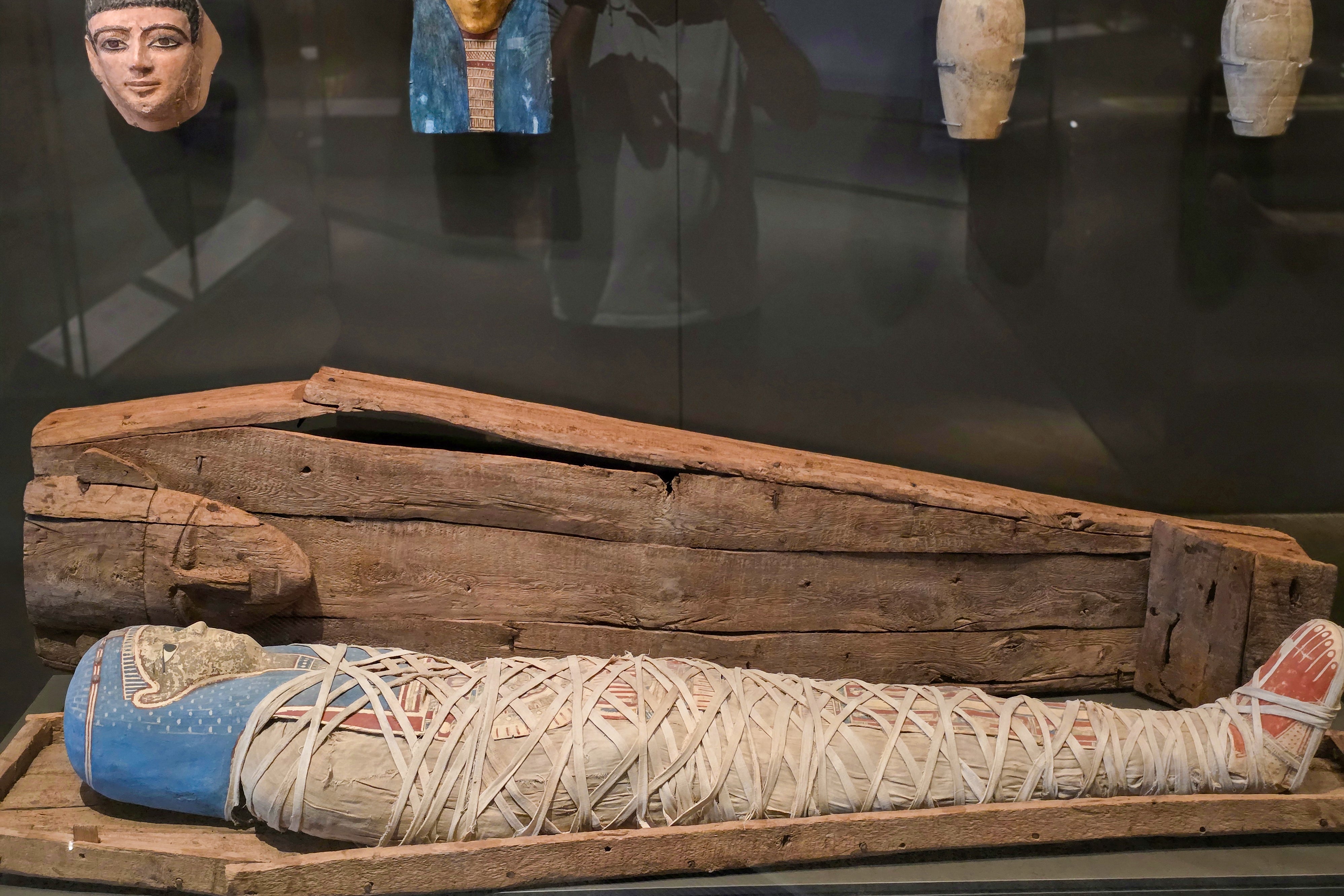Archaeologists unearth shock ancient Middle Kingdom Egyptian tomb
A family tomb was discovered despite flooding destorying much of the area
Your support helps us to tell the story
From reproductive rights to climate change to Big Tech, The Independent is on the ground when the story is developing. Whether it's investigating the financials of Elon Musk's pro-Trump PAC or producing our latest documentary, 'The A Word', which shines a light on the American women fighting for reproductive rights, we know how important it is to parse out the facts from the messaging.
At such a critical moment in US history, we need reporters on the ground. Your donation allows us to keep sending journalists to speak to both sides of the story.
The Independent is trusted by Americans across the entire political spectrum. And unlike many other quality news outlets, we choose not to lock Americans out of our reporting and analysis with paywalls. We believe quality journalism should be available to everyone, paid for by those who can afford it.
Your support makes all the difference.Archaeologists were shocked to unearth an ancient tomb with 11 sealed burials near the famed city of Luxor.
Egyptian authorities said teams from Egypt and the United States discovered the tomb in the South Asasif necropolis, next to the Temple of Hatshepsut on the Nile’s West Bank in Luxor.
Egypt’s Tourism and Antiquities Ministry said in a statement on Friday the tomb dates back to the Middle Kingdom (1938 B.C.-1630 B.C.).
The joint Egyptian-American mission excavating the necropolis found coffins for men, women and children, suggesting that it was a family tomb used for generations during the 12th Dynasty and the beginning of the 13th Dynasty, said Mohamed Ismail Khaled, Secretary-General of the Supreme Council of Antiquities in Egypt.
He said ancient floods destroyed most of the burials’ wooden coffins and linen wrappings.
However, some items such as jewelry in women’s burials were found intact, including a finely crafted necklace with 30 amethyst beads and two cylindrical agate beads framing a hippo-head amulet, according to the statement.
Catherine Blakeney, chief American archeologist with the mission, said they found two copper mirrors, one with a lotus-shaped handle, and the second with a unique design of Hathor, goddess of the sky, women, fertility and love in ancient Egypt.

The discovery came as Egypt has doubled efforts to attract more tourists, a significant source of foreign currency for the cash-strapped North African country. Tourism, which depends heavily on Egypt’s rich Pharaonic artifacts, suffered a long downturn after the political turmoil and violence that followed a 2011 uprising.
Last month, the Grand Egyptian Museum, a mega project near the famed Giza Pyramids, opened 12 halls exhibiting Pharaonic artifacts for visitors as a trial ahead of the yet-unannounced official opening.
A year ago a new airport – Sphinx International – opened east of Cairo. It allows easy access to Giza, the Pyramids and GEM without travelling through the Egyptian capital.
Some prospective tourists have been staying away because of the increasing tension in the Middle East. But Philip Breckner, director of specialist tour operator Discover Egypt, told The Independent earlier this year: “Egyptian life in the street, in the shops, the hotels, on the cruises is perfectly normal – and pretty oblivious to events outside and in neighbouring countries.”

Join our commenting forum
Join thought-provoking conversations, follow other Independent readers and see their replies
Comments